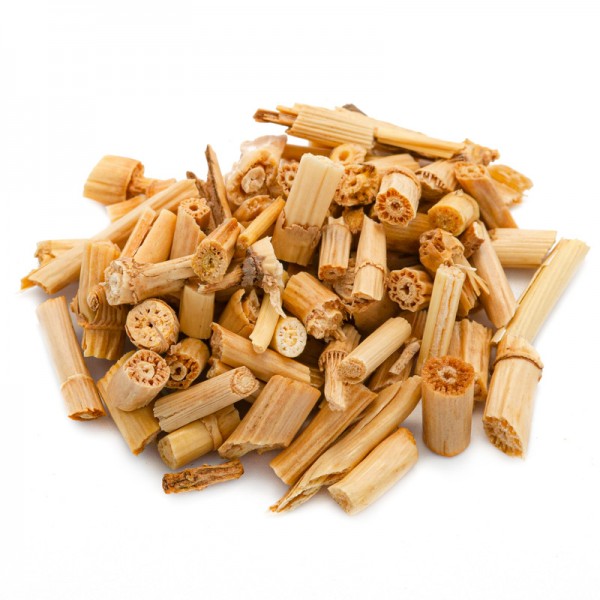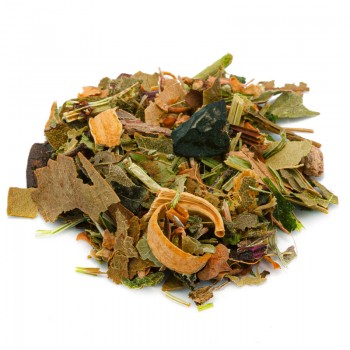The grass is a plant known for its reputation as a weed, but in reality it has many beneficial properties, known to phytotherapy.
It has been used for thousands of years to treat inflamed bladder, water retention, uterine infection, urinary tract irritation. It also has a herbal tradition as a natural remedy for stones and kidney infections, although today its diuretic and anti-cellulite properties are highly appreciated.
Gramigna rhizome: properties and benefits
The underground part of the plant, the rhizome, has diuretic and purifying qualities, especially recommended in case of inflammation and water retention. The drainage action that the grass promotes, can bring benefits to the kidneys and bladder, with characteristics that counteract the irritation of the urogenital tract, purifying the urinary tract in case of cystitis and urethritis.
It brings well-being even in the case of an enlarged prostate gland and prostatitis, through the decoction that can help against irritation. The rhizome of gramigna also gives well-being to the kidneys, relieving symptoms in case of renal colic. In addition to the purifying action, it is believed to have a good effect in containing kidney stones.
It is also considered useful for the detox effect on the liver, which also benefits gallstone conditions.
Given the diuretic effect, the grass is suitable for regulating blood pressure and to fight cellulite.
Water retention, in fact, is one of the factors that favors the appearance of cellulite edema, while the purifying and diuretic action simplifies anti-cellulite treatments. In addition, the rhizome of gramigna is considered a natural anti-inflammatory, which has historically been used to treat rheumatism, arthritis and gout. Its traditional application was also known in case of flu with fever.
In liquid intake, it is good for soothing irritation in the lining of the mucous membranes of the throat and stomach.
In this sense, the rhizome of gramigna can be advantageous for the protection of the gastrointestinal system, favoring the regularity of transit and counteracting any inflammation.
The infusion of grass grass, with refreshing and purifying properties, is useful for relieving skin lesions.
Origins and History of cultivation
The weed is a perennial herb native to Europe, Asia and northwestern Africa.
The scientific name Elymus repens derives from the Greek name (elymos or élumos) of an unidentified cereal, and the addition repens indicates a creeping or low plant. Initially this plant was called Triticum repens, proposed by the botanist Linnaeus (1707 - 1778), but was later modified into Elymus repens by the botanist Frank Walton Gould (1913-1981).
It is considered a weed, which invades agricultural land and has always been frowned upon, as it produces chemicals that slow down the development of other plants.
Widespread in many countries, it has taken on different names and has historically been used both for animal fodder (grass hay) and in herbal medicine.
Only in times of famine, tubular root was used as food, dried and pounded to make bread, or roasted.
The main parts used in herbal medicine are the root, the rhizome and the seeds.
During the classical period, Dioscorides and Pliny (1st century AD) cited the use of grass roots to increase urine flow and treat kidney stones.
Centuries later, in 1597, the herbalist John Gerard cited the roots of the plant as beneficial thanks to the laxative properties, useful for those suffering from constipation, and those with obstructions in the liver and in the uterus.
Plant and flowers
Elymus repens is a perennial plant that belongs to the Poaceae family or herbaceous plants.
The plant grows spontaneously everywhere, up to about 2,000 meters above sea level, for a height of up to about 80 centimeters.
It features a yellowish rhizome, with the buds underground to protect them.
The leaves are flat,the flowers appear from May to July,
We can find the weeds as a weed in the grounds, at the edges of roads, in deserts and along railways, in gardens as in courtyards. In fact, this plant grows almost everywhere.
It feeds best on soils rich in nitrogen, and with a lot of water.
Nutritional values of Gramigna - Rizoma
The rhizome of Gramigna contains several elements including the polysaccharide triticina, mucilage, potassium, zinc and the volatile oil agropyrene.
How to use the Gramigna rhizome in herbal tea
Despite its unpleasant taste, it can be taken as a decoction or as a detox tea.
Preparation of the grass decoction: 30 grams of rhizome inserted in the quantity of water sufficient to cover them, and boil for about 1-2 minutes. Throw away the water, which brings with it the bitter principles, and boil the residue after bruising it to break the hard epidermis, in 1250 grams of water, until the reduction of one liter. Let it rest for 10 minutes, and filter.
To make the herbal tea, use the dried rhizome cut herbal tea - about 2 teaspoons per cup of water (250 ml).
The Gramigna infusion is obtained with water at 100 ° C and an infusion of a few minutes (8-10).
Add honey or sugar if desired.
Gramigna rhizome: side effects and contraindications
The grass grass is generally considered a safe herb for intake, but it is good to respect the quantities in order not to report adverse events. Among the rare side effects, altered heart rate and rhythm, nausea and vomiting were recorded.











 No reward points for this product.
No reward points for this product.






